Mark Amery – 20 September, 2017
Following such a countercultural strand is very welcome. I love this as an exploration of how artists make the dark and mysterious visible, but with the way it's framed the exhibition overstates its relevance: Firstly, the vagueness of the definition of the occult leaves a lot to be argued for as being absent. Secondly the exhibition's claim that “art and the occult have always been entwined” says little other than to suggest its influence is more pervasive in the arts today than the exhibition shows it is.
Wellington
Group exhibition
Occulture: The Dark Arts
Curated by Aaron Lister
12 August - 19 November 2017
As a teen, I was never an acolyte of the dark arts. Plenty of other awkward arts-leaning, rugby-rejecting, white boys from the English-rooted North Shore Auckland suburbs were. Many transformed into scowling, overcoat-wearing Goths, listening to Bauhaus, visiting cemeteries after parties and muttering about Aleister Crowley.
Everything from tarot cards to astrological charts, felt like a way to reject your religious upbringing while holding onto the trappings of mysticism. A form of playacting. We all needed that, but it always seemed an alternative to concern for more vital dark matters in this place, and more social forms of theatre.
I write personally because Occulture: The Dark Arts feels like it comes from this stock. It is an ambitious group exhibition full of interesting strands and strong work, but I struggled with the cultural perspective it’s attempting to hold, and the definition of the realm of its circle. It wobbles in holding its fascinating shape.
Curated by City Gallery’s Aaron Lister, the exhibition brings together New Zealand and international contemporary artists’ works that touch off the occult-that secret magical practice where symbols and rituals are used to harness dark supernatural powers. The show brings these together with work by distinctive, largely 20th century, figures, who all sat counter to the prevalent culture of their times.
Following such a countercultural strand is very welcome. I love this as an exploration of how artists make the dark and mysterious visible, but with the way it’s framed the exhibition overstates its relevance: Firstly, the vagueness of the definition of the occult (or the ‘dark arts’) leaves a lot to be argued for as being absent. Secondly the exhibition’s claim that “art and the occult have always been entwined” says little other than to suggest its influence is more pervasive in the arts today than the exhibition shows it is. Looking at what’s exhibited here in the context of wider contemporary art practice suggests that the occult has actually had a limited impact. A persistently kooky slipstream.
Presented by the gallery as the heart of the exhibition is the notorious underground English occultist and self-taught artist, Aleister Crowley. Active in the early decades of the 20th century, Crowley—popularly denounced as a Satanist—has had widespread influence. Represented by three paintings (1920-22), these are of more illustrative interest than captivating works of art.
Also speaking to teen dalliances with darkness, Simon Cuming’s untitled, hammy photographic and audio work plays up the enduring Victorian fascination with spirit photography, but converted to the digital age. It’s an image at night in Wellington’s colonial Bolton Street Cemetery, of leaning gravestones seen through branches—lit up by a smartphone’s flash—and if you stand in the right place spooky field recordings from the graveyard emanate from above. Actually they sound more like old synthesised murmurings, the spirits fed through old audio equipment—as if a sound art performance has tried to reach the dark side (a local dark arts tradition otherwise absent from the exhibition).
Cuming’s work, a Thomson and Craighead ‘Apocalypse’ fragrance, a Mikala Dwyer spell made with a wall-painting, installations by Dane Mitchell and Taiwanese Yin-Ju Chen and American Tony Oursler: all involve a practice of the dark arts, but there’s no sense they’re actually trying to affect anything. They suspend disbelief, exploring the boundaries of visual perception and our inability to fully rationalise the meaning of things.
Dane Mitchell’s work has often been about the uncertainty of belief, and how forms might hold the non-visible. Here, that includes the breath of a shaman captured in blown glass. In installation the works in arrangement feel a little confused. I particularly like his twelve ceramic orbs, each charting the constellation of a star sign, fired with hallucinogenic material chosen by a shaman and holding the imprint of the artist’s tongue. Swept into the corner of the gallery’s wide front gallery they look like curling stones, ready to be slid out across the floor in an astrologically driven mapping exercise.
And then there’s laughter. Tony Oursler’s installation (a welcome return to City Gallery after his big survey here in 1999, the year from which this work Incandescence dates) captures a general contemporary existential anxiety, playfully working things up to a point of hysteria. A lightbulb goes on and off at irregular intervals in a small gallery utilities room that is usually hidden behind the gallery walls. It carries the voice of a spirit who, toying with us mercilessly, unsettles any fixed position we might take. It’s like Samuel Beckett reincarnated as a disembodied stand-up comic conducting a séance.
Yet, we all feel a darkness, don’t we? In Occulture that feels largely rooted in a Victorian English stock, New Zealand’s colonial whakapapa. The delivery mechanism for this was principally books, with their black and white prints of engravings and drawings. Dark, sooty London, European folk stories, tales of witch trials and fairies at the bottom of the garden. For me, in the background some hooded figure was always chanting about things I didn’t understand.
Suitably then, graphic and book work is well represented in this exhibition: the work of Leo Bensemann and more recently Jason Greig; some classics (Alexander Turnbull Library sourced 19th century editions of Milton’s Paradise Lost and Fuselli’s Study for Three Witches from Macbeth); and recent art books from British publishing company Fulgur, known for their occult publishing. With the latter it’s frustrating only being able to peer at them through glass, fixed at a single double-page spread.
A highlight is a suite of monoprints by Jason Greig, based on Robert Louis Stevenson’s The Strange Case of Dr Jekyll and Mr Hyde (an emblematic work of Victorian descent into darkness, if ever there was) and originally published in book form. Christchurch based, Grieg’s brooding Gothic work, with its masterful play on 19th century romanticism, has long deserved a survey in the North Island.
With his tragic figures and dramatic contrasts with light, Greig finds ways to adventurously make visible the internal struggles of the individual psyche. Here in scenes from the classic tale of an individual’s battle between good and evil, reality dissolves into grey patches and planes, expressive shadowy drags, scratches and blotches and the darkest of blacks. Men and bricks glint keenly at the centre. Here’s one artist dealing with a real demon - alcoholism (the gallery making the rare decision to note such a biographical detail in the wall label).
It strikes me as odd that the exhibition largely bypasses Maori, Pacific or Asian perspectives on the concept of the dark arts There are exceptions, but they feel like they are speaking principally to the European traditions. Lorene Taurerewa’s charcoal drawings and Fiona Pardington’s still lives address the Gothic strain throughout the show. Dreamlike impressions, Taurerewa draws the misty suggestion of spirits with an essense of the otherness her Asian Pacific ancestry in figures put into the surrealist confinement of Victorian forms of presentation: the bell jar, hoop skirt and stilted photographic portrait.
Neatly paired on the next wall are Bensemann’s wonderful series of Fantastica drawings from 1937, with their surreal wispy blend of European and Asian folklore. Like the other New Zealand artists in this exhibition, Bensemann worked in this idiosyncratic space estranged from any sense of ‘New Zealand tradition’.
This is all in particularly sharp relief to Colonial Sugar, the current exhibition of works by Tracey Moffat and Jasmine Togo-Brisby upstairs in City Gallery’s back galleries. Those works speak to the dark legacy of the Pacific slave trade that assisted the 19th century development of sugar cane plantations in Queensland, where the darkness is far closer to home. Togo-Brisby’s great-great-great grandparents were taken from Vanuatu as children. Vanuatu workers continue here to offer cheap labour.
Occulture, then, doesn’t attempt to connect to the dark spirit of this place—the conflicts that sometimes feel like they’ve left a shadow over places you pass through. Yet, the most significant new work in the exhibition does play to the tension between dark human action and the stars.
In Liquidation Maps Yin-Ju Chen has produced five rather remarkable charcoal star maps, each made as a reading of a massacre, a historic act of horrific violence in Asia—from the 1975 Khmer Rouge capture of Phnom Penh to the 1987 slaughter of Vietnamese boat people by the Chinese army in Lieyu. Each abstract symbol, laid mandala-like, drawing is accompanied by an extensive written analysis by an astrologer that interprets the historical events through a reading of Yon-Ju Chen’s charts. In the face of unspeakable horror, where to turn to than the cosmos? Less successfully the installation also features computer simulations of a revolving Mars and Moon, and a cosmic bang itself.
The fatal subjectivity of all analysis is made clear. The astrologer speculates at length on the events and makes bold judgements—moving from “We can read this from the charts…” to spectacular soothsaying (“One wonders if the fears and suspicions the Japanese soldiers had about the Chinese was finally lifted after all the Chinese had been killed” on the 1942 Sook Ching massacre). How we rationalise the most terrible of atrocities, as well as look to the stars afterwards.
I ask myself whether Yin-Ju Chen’s drawings have any real relationship for the artist to each of these historic events. All readings of history dissolve past events into abstraction through subjective linkages, as much as clarify them. Historians and artists alike draw elements together within structures they themselves create. Here the complex arrangements of charts, lines and elements link together within rings, but these are but the frame for large fields of hand-smudged grey areas. Installed into table tops, each drawing spins like a compass. Pools in which to gaze and try and rationalise our thoughts in the face of life’s terrible absurdity.
When art deals with mystery you could expect that in New Zealand the theme might be more common. Yet, Occulture suggests it has been barely a dalliance. A minor work by Brendon Wilkinson for example seems included largely due to the artist’s story of collecting moth wings in his studio at night, and then forming a collage from them. Inclusions like this feel skittish.
Other works alongside Crowley confirm the cultural outsider nature of the theme; the mid 20th century paintings of Dunedin-born Sydney artist and occultist Rosaleen Norton, for example, who claimed to be born a witch and was dubbed by the papers as the “witch of Kings Cross”.
It’s great to see this alternative art historic strand given gallery space, but the way the exhibition moves between contemporary art and museum mode makes it more a conversation starter than a place providing deep understanding. While on the one hand in Occulture we have a scattered group of contemporary artists with tenuous links to the occult, on the other there’s no consideration of the rich history of the occult itself in New Zealand. A history, for example, that once saw a school for witches and wizards in a Chapman Taylor designed house (himself an occultist) in Havelock North - Havelock Work. Described by Robert Ellwood in Islands of the Dawn: The Story of Alternative Spirituality in New Zealand as “a Vatican to the occult” it’s a key part of the story of the Hermetic order of the Golden Dawn, to which Aleister Crowley belonged.
Mark Amery
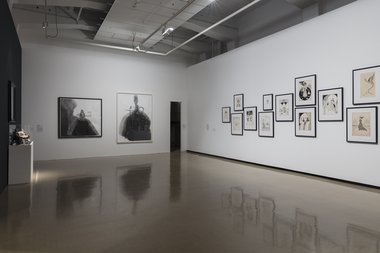
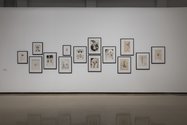
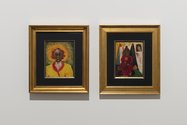
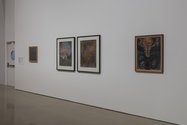
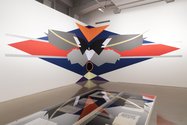


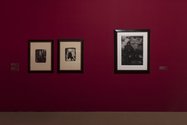
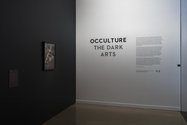
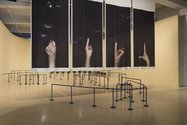
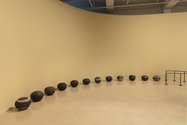

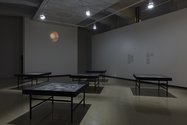
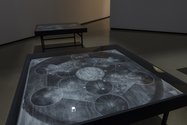
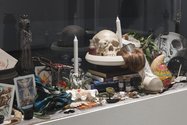
 Advertising in this column
Advertising in this column Two Rooms presents a program of residencies and projects
Two Rooms presents a program of residencies and projects


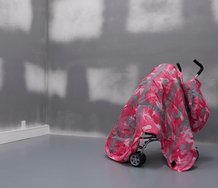
This Discussion has 0 comments.
Comment
Participate
Register to Participate.
Sign in
Sign in to an existing account.